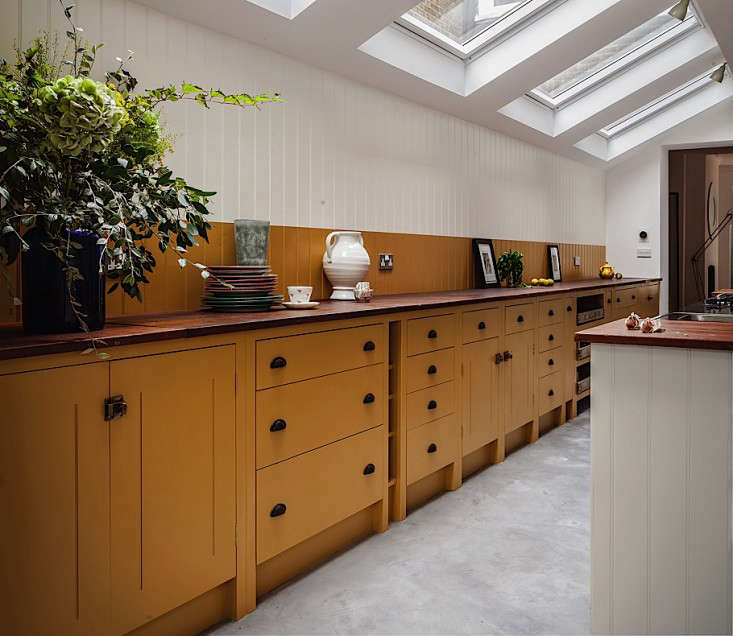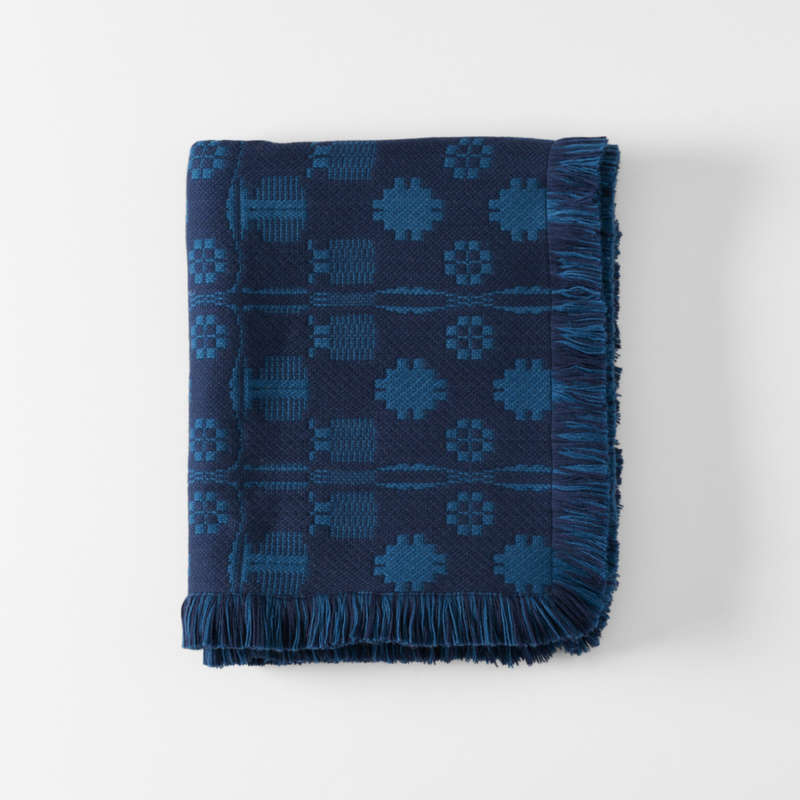Hear the word “plywood” and you might think of a cheap, maybe even low-quality construction material, used behind the scenes but not sophisticated enough to be seen on the surface. Thankfully, though, plywood is earning its rightful reputation as a durable, versatile, and—yes—good-looking design material, as suitable for furniture and kitchen cabinets as it is for subfloors.
“Architects have always been interested in plywood, but it may be more popular with the general public now than it’s ever been,” Swedish architect Björn Förstberg told us in our piece Remodeling 101: A Plywood Primer. In this week’s installment of 10 Things Nobody Tells You, here a few things you might not know about this trusty, wallet-friendly material.

1. It’s essentially “a layer cake of lumber and glue”.
Or so said Popular Science back in 1948. This layering process is what makes plywood unusually strong and durable; for more on how it’s made, see Remodeling 101: A Plywood Primer (or watch this video love letter to plywood).
2. It comes from the word “to fold”.
The word “ply” comes from the French word plier, meaning “to fold,” a reference to the many layers that make up plywood.

3. It’s not the same as MDF.
Don’t get plywood confused with particleboard or medium-density fiberboard (MDF): these inexpensive materials are made of wood scraps and are not as high-quality or strong as plywood.
4. You can use it on cabinets, on the ceiling, or as trim.
Over the years, some of our favorite projects have used plywood in inventive ways, from tabletops to kitchen cabinets, open-shelf bathroom storage to interior cladding—even as backsplashes and stairwells. For a few of our favorite uses, see 10 Favorites: The Unexpected Appeal of Plywood.

5. It’s a design darling (and shows up in places you might not expect).
From Aalto to Eames to Donald Judd, plywood has long been a favorite material of designers and artists. About an exhibit (called “Plywood”) of Donald Judd’s work with the material, NYC-based Paula Cooper Gallery writes: “Judd favored industrial materials like aluminum, steel, plexiglas and plywood among others in part because of their ‘blankness’: they carried no artistic connotations, no particular ‘meaning’ in the history of art. They were also plain, easily assembled and could be used with precision.” Add to that plywood’s strength and ability to bend, and it makes it the perfect material for all kinds of uses, from skate parks to aircraft.

6. It’s not one-size-fits-all.
Plywood tends to get lumped under one umbrella. But there are many different kinds, suitable for different sorts of projects, from exterior plywood to hardwood plywood, tropical plywood to marine-grade plywood. Read more about the types available in Remodeling 101: A Plywood Primer.
7. And, it can be two-faced.
Ever wonder what the letters on plywood refer to? That’s the grade, or quality, of the wood. A-grade, as you might guess, is premium quality, while the much lower D-grade will have marks and imperfections. If the plywood has two letters, it means the material is one grade on one side and a different grade on the other. A code of “FSC” means the plywood comes from responsibly managed forests. To add to the confusion, there are also different plys; see Remodeling 101: A Plywood Primer if you’re trying to decode which type of plywood is right for you.

8. It’s a genius idea for budget flooring.
It’s inexpensive, durable, and can be painted, sealed, or left plain. Need evidence? See Remodeling 101: Painted Plywood—The Best Budget Wood Floor.
9. Take care when using it.
For all of its perks, plywood is treated, which can add health concerns that plain lumber doesn’t have. “Wear a dust mask and, if possible, do your sawing outdoors,” advises contributor Barbara Peck. “Indoor plywood made with urea-formaldehyde glue can cause health problems due to off-gassing from the wood. But recent years have brought new government standards for formaldehyde emissions, and some indoor plywood is now being made formaldehyde-free.” Take a look at our Remodeling 101 post Is Plywood Safe? for a full run-down on what to watch for.

10. Choose your plywood like you’d choose a slab of marble: in person.
Like marble, no two pieces of plywood are the same. For that reason, it’s a good idea to survey your sheets of plywood in person, not online, to get a sense for the grain and knots, says Barbara in Remodeling 101: A Plywood Primer. That way you can get a sense for the character of the plywood and where it’ll work best.
More in 10 Things Nobody Tells You, our series for newbie remodelers:
- 10 Things Nobody Tells You About Basement Well-Being
- 10 Things Nobody Tells You About Renovating Your Kitchen
- 10 Things Nobody Tells You About Painting Floors
- 10 Things Nobody Tells You About Subway Tile
- 10 Things Nobody Tells You About Painting Furniture
- 10 Things Nobody Tells You About Washing Your Bedding
- 10 Things Nobody Tells You About the Trendiest Tile of 2019
- 10 Things Nobody Tells You About Renovating Your Bathroom
- 10 Things Nobody Tells You About the Benefits of Wool
- 10 Things Nobody Tells You About Clawfoot Bathtubs
- 10 Things Nobody Tells You About Painting Kitchen Cabinets
- 10 Things Nobody Tells You About Shiplap
- 10 Things Nobody Tells You About Marble Countertops
- 10 Things Nobody Tells You About Painting a Room White
Frequently asked questions
What is plywood?
Plywood is a type of engineered wood made from thin layers or veneers of wood glued together with the grain of each layer running perpendicular to the adjacent layer. This cross-grain construction gives plywood its strength and stability.
What are the advantages of using plywood?
Plywood offers several advantages. It is strong, durable, and less prone to warping or shrinking compared to solid wood. It has a consistent and uniform structure, making it reliable for various applications. Plywood is also available in different thicknesses, sizes, and grades, making it versatile for different projects.
What are the common uses for plywood?
Plywood has a wide range of applications. It is commonly used in construction for subfloors, roof sheathing, walls, and cabinets. It is also used in furniture making, as well as for crafting doors, shelves, and built-in storage units. Additionally, plywood is popular in DIY projects and as a material for making prototypes.
Is plywood environmentally friendly?
The environmental friendliness of plywood depends on factors such as the source of the wood and the manufacturing process. Look for plywood certified by organizations such as the Forest Stewardship Council (FSC), which ensures responsible forestry practices. Additionally, using plywood made from sustainably harvested wood and low-emission adhesives can contribute to its eco-friendliness.
What are the different grades of plywood?
Plywood is graded based on its quality and appearance. The grading system varies, but common grades include A, B, C, and D. Grade A represents the highest quality and appearance, with minimal defects, while Grade D may have more imperfections. Different grades are suitable for different applications, so choose the grade that fits your project's requirements.
Can plywood be used in wet environments like bathrooms or kitchens?
While plywood is generally not suitable for prolonged exposure to water, certain types of plywood are designed for wet environments. Marine-grade plywood, for example, is specifically made to withstand moisture and can be used in applications such as boat building or bathroom and kitchen projects. It's essential to choose the right type of plywood for wet areas.
How should plywood be finished or sealed?
Plywood can be finished or sealed with various methods depending on the desired look and application. Common options include painting, staining, varnishing, or applying a clear coat. If using plywood in high-moisture areas, it's important to use an appropriate sealer or waterproofing agent to protect the wood and prevent moisture damage.





Have a Question or Comment About This Post?
Join the conversation